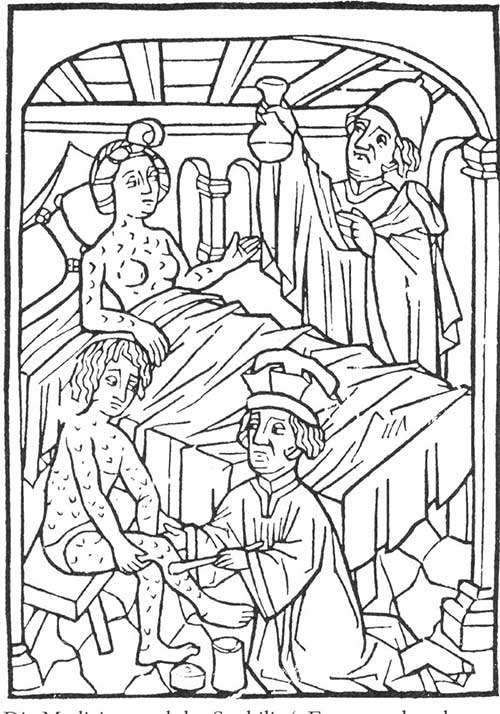Throughout history, syphilis has caused the deaths of 5 million people in Europe, yet the origins of this disease remain an unanswered question.
The Controversy Surrounding the Origin of Syphilis
The history of syphilis has been thoroughly researched, but the precise origin of the disease has yet to be determined. Two hypotheses have been proposed: one suggests that syphilis was brought to Europe from the Americas by the crew of Christopher Columbus as part of the Columbian Exchange, while the other hypothesis posits that syphilis existed in Europe prior to this but went unrecognized.

An illustration by the German artist Albrecht Dürer (1496) depicting a mercenary suffering from syphilis. In Europe, the disease was believed to have astrological origins.
From its early days, syphilis has been a stigmatized disease, with nations and territories often blaming neighboring countries (and sometimes enemies) for outbreaks. Thus, residents of Italy, Germany, and the United Kingdom referred to syphilis as “the French disease”, the French called it “the Neapolitan disease,” the Russians labeled it “the Polish disease,” and the Poles referred to it as “the German disease.”
The Danes, Portuguese, and North Africans named it “the Spanish/Castilian disease,” while the Turks coined the term “the Christian disease.”

The earliest known medical illustration of syphilis patients, Vienna (Italy) 1498.
Furthermore, in Northern India, Muslims blamed Hindus for the outbreak of the disease. However, Hindus blamed Muslims, and ultimately everyone pointed fingers at Europeans…
“The Killer” in Europe in 1945
The first recorded outbreak of syphilis in Europe occurred in 1495 when the French army besieged Naples (Italy). The disease may have spread to the French through Spanish mercenaries serving King Charles of France during that siege.

In 1590, the discovery of guaiacum as a popular treatment for syphilis emerged. Although guaiacum lacked the unpleasant side effects of mercury, it proved ineffective.
From this point, the epidemic spread across Europe. American scientist Jared Diamond described syphilis in Europe for the first time in 1495: “Pustules often covered the body from head to knee, causing flesh to fall from the face and leading to death within months.”
Subsequently, the disease caused a higher mortality rate than it does today. The epidemiology of this first syphilis outbreak indicates that the disease was either a new strain or a mutated form of a previous strain.
As the Thirty Years’ War dragged on—an ample time not only for marriages between mercenaries and local women, including incidents of rape and prostitution—the disease spread rapidly across Europe as soldiers returned to their homelands.
As many as 5 million people died from this disease. According to a 2020 study, over 20% of individuals aged 15-34 in London by the late 18th century had been treated for syphilis.


















































